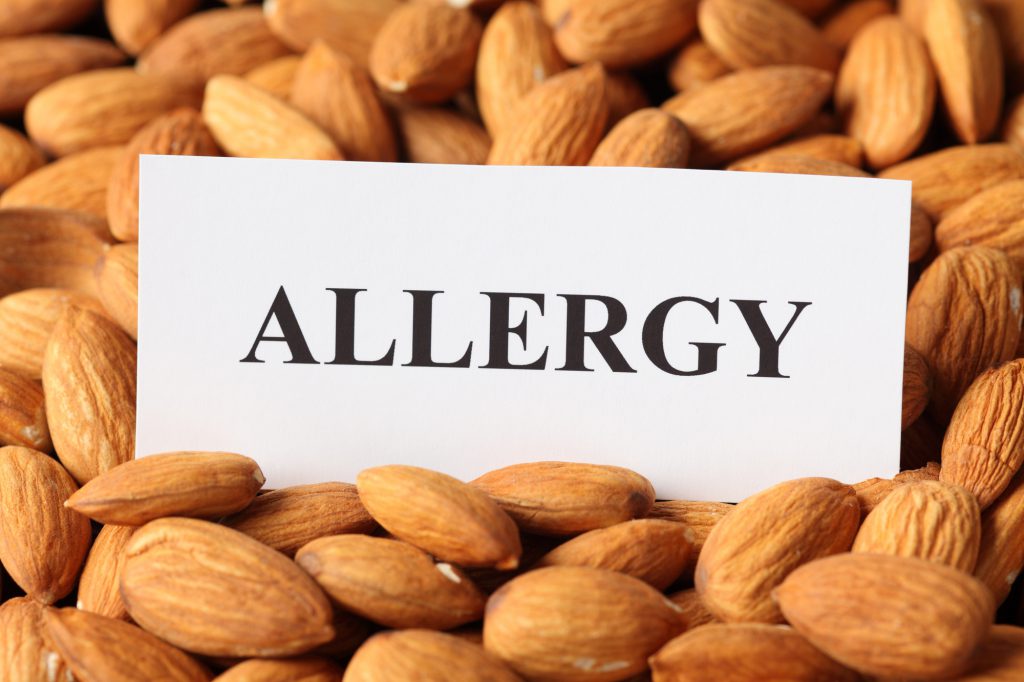Almonds are a great food packed with nutrients. They are both filling and versatile. Almond options are oftentimes consumed by those who have specific food intolerances.
Almonds are high in fiber, unsaturated fats, protein, and calcium. They provide many health benefits for a balanced diet. Studies have found that almonds can help to reduce cholesterol and also heart disease.
However, tree nuts such as almonds are one of the leading causes of allergic reactions. These allergic reactions can range from a mild rash to severe breathing difficulties.
Most people experience allergy symptoms just after a few hours of eating them. Read on to learn more about almond allergy symptoms and how to manage them.
What is an Almond Allergy or Intolerance?
An almond allergy or intolerance is a set of symptoms brought on after being in contact with almonds. While most people can eat almonds in moderation with effects, those with an intolerance to almonds are likely to feel different levels of sickness after eating almonds.
One reason for an allergic reaction is because the body may identify almond proteins as foreign. This can happen when tiny particles leak into the bloodstream during digestion. This triggers an immune response which can cause inflammation.
As with all food allergies, the severity and type of symptoms are different from person to person. Symptoms may also take up to 72 hours to appear.
Below are 3 of the most common almond allergy symptoms.
1. Skin and Mouth
Symptoms involving the skin are usually the most typical food allergy reactions. If you have an almond allergy, you may develop hives or an itchy rash after eating almonds. Most of the time, these symptoms will appear within an hour of exposure.
Oral allergy syndrome another common reaction. It is another name for reactions involving the mouth. An itchy mouth or throat is one of the most common allergy symptoms. Sometimes, the tongue may also swell up.
2. Respiratory Tract and Gastrointestinal Systems
Almond allergy symptoms involving the respiratory tract usually include getting a stuffy, runny nose. Many also report an itchy or tingly sensation in the nose. In children, allergy symptoms can also be linked to asthma.
Gastrointestinal symptoms include stomach cramps, vomiting, and diarrhea. These symptoms typically occur pretty quickly after eating almonds.
3. Anaphylaxis
Anaphylaxis is one of the most serious allergic reactions that can happen. During anaphylaxis, a person can go into shock and stop breathing. If not treated right away it can result in unconsciousness or death.
If you have anaphylaxis symptoms, it is imperative that you seek medical attention right away. If you have a severe reaction to almonds, this can occur within seconds or minutes of exposure to an almond.
Management
The best way to avoid an allergic reaction is to avoid eating the food completely. While being allergic to almonds may not mean you are allergic to other types of tree nuts, consult your doctor to see if it would be best if you just avoided tree nuts altogether.
Tree nuts are among the 8 most common food allergies affecting adults and children. Most food companies and manufacturers are careful to mention any presence of nuts in their products. It is important for those with allergies to read all food labels carefully.
Ready to Manage Your Almond Allergy Symptoms?
If you regularly experience any of the symptoms detailed above, you may want to consult your doctor to figure out exactly what your allergy is. If your doctor’s office has an on-site lab, you will be able to find out your results quite quickly.
Although you may be an almond lover, it’s not the end of the world if you have to cut it out of your diet. Especially if it is going to keep you safe and healthy. There are plenty of other options that can be both tasty and nutritious.
Check us out for more information on how to stay healthy.


